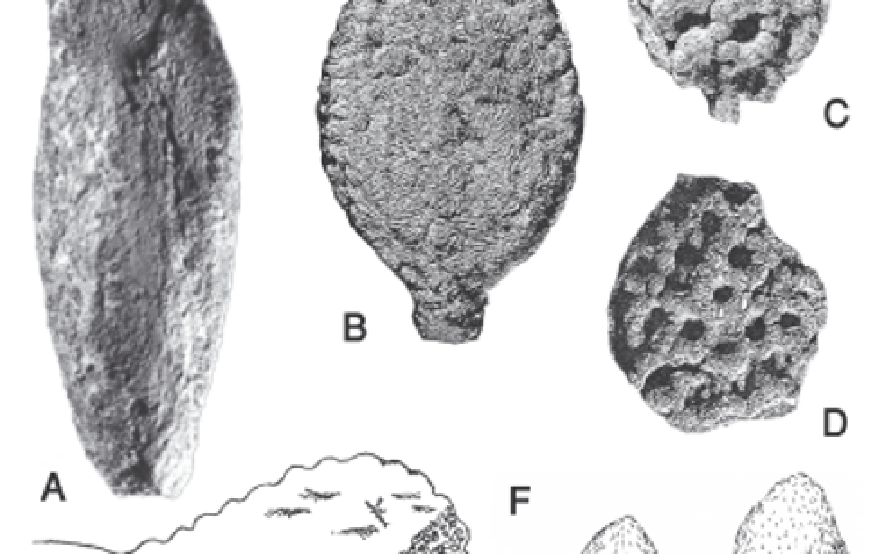Geoscience Reference
In-Depth Information
Fig. 6. A-D: Phosphatic molds of the two types of chambers in Campanian crustacean
burrow system (samples GSI 5597). A & B: Nursery and storage chambers. A: Side view of
vertically enlarged chamber; B: The pattern of the chamber wall consisting of low, circular to
ovoid, blister-like elevations in irregular orientation of their length as indicated by fine
transversal scratches in different directions. C & D: Casts of chamber floor comprising rings
of pits arranged in a honeycomb pattern, leaving alternating non-pitted parts of the floor,
which enables crustacean to cross the chamber without stepping on the pit's content. The
pits were interpreted as protected sites for individual large eggs in a brood chamber. E:
Sketch of the single type of chamber of Lower Eocene burrowing crustaceans suggesting the
position of the egg-mass and the hatched young in relation to adult crustaceans crossing the
chamber within the burrow network. H: Sketch of Pleistocene
Spongeliomorpha sicula
(Sicily,
Italy; D'Alessandro & Bromley, 1995). All figures in 80% natural size.



Search WWH ::

Custom Search